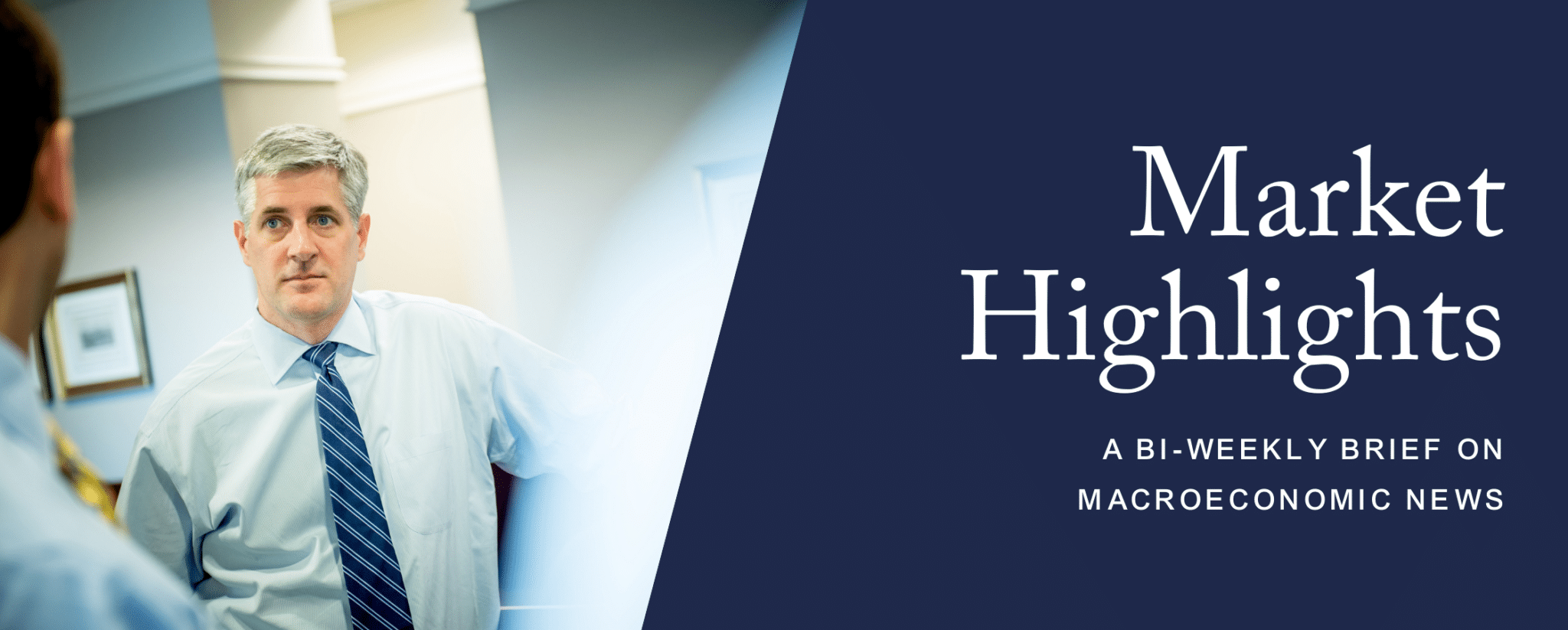
July 31, 2023
The soft landing bandwagon gathered further momentum last week with stronger growth and cooler inflation readings. Second quarter GDP, personal consumption and durable goods orders were all better than expected. Consumer confidence continues to rebound, presumably thanks to a resilient job market and falling inflation. Jobless claims have recently fallen, indicating the labor market has regained some momentum. All this data suggests recession is not imminent. Meanwhile, the inflation data we received last week – the June personal consumption expenditures deflator and the second-quarter employment cost index (both favored inflation gauges of the Federal Reserve) – showed that inflation continues to cool. For the second month in a row, core PCE, including the closely watched labor intensive “Supercore” services PCE excluding housing, slowed more than had been expected.
Last week, the Fed followed through as expected with its well-telegraphed +25 basis point July rate hike. Chairman Powell was noncommittal on any September action, saying the Fed remains data dependent, but resolute and patient towards getting inflation back to its 2% long-term target. The market, however, increasingly believes that the Fed is done based on the recent inflation trends.
A soft landing is now the consensus view. Bank of America’s July global survey found that 68% of surveyed fund managers expect an economic slowdown without a recession. We have maintained that a soft landing is possible, but not probable, based on history, especially considering the Fed has never successfully engineered a soft landing when inflation started so high and unemployment so low. The “this time is different” case rests upon the view that inflation was caused by pandemic and Russia/Ukraine supply disruptions that have now healed, leading to disinflation, which means that the Fed is closer to pivoting to support the economy. This view seems to discount the role that massive fiscal and monetary stimulus played in driving excess demand at the same time as the supply challenges. Excess pandemic-era savings are slowly being worked down, but are still supporting resilient consumer spending. In addition, while stimulus checks are a thing of the past, fiscal stimulus is still flowing from the Infrastructure Bill, the CHIPs Act, and the Inflation Reduction Act spending.
Aggressive rate hikes (federal funds now 5.25-5.50%, up from 0-0.25% in early 2022), ongoing Quantitative Tightening (roughly $2 trillion combined reduction so far for the Fed’s and ECB’s balance sheets), declining money supply (first time since the Great Depression), significantly inverted yield curve, declining LEIs, and tightening bank credit all strongly suggest a recession is more a question of when, not if. A recession will cause more severe damage to corporate profits than what we’re currently experiencing. So far, second quarter earnings season is delivering the typical “beats” compared to downwardly revised expectations, but only modest revisions to forward estimates as revenue growth and profit margins remain under pressure.
In our view, the stock market remains vulnerable to a set-back with stock valuations full, earnings estimates at risk, and investor sentiment increasingly bullish and complacent.